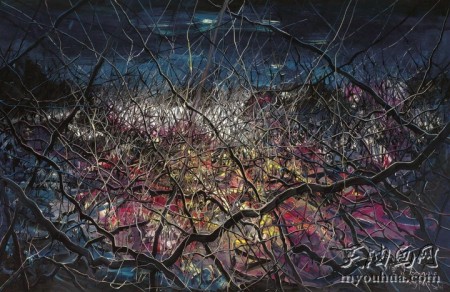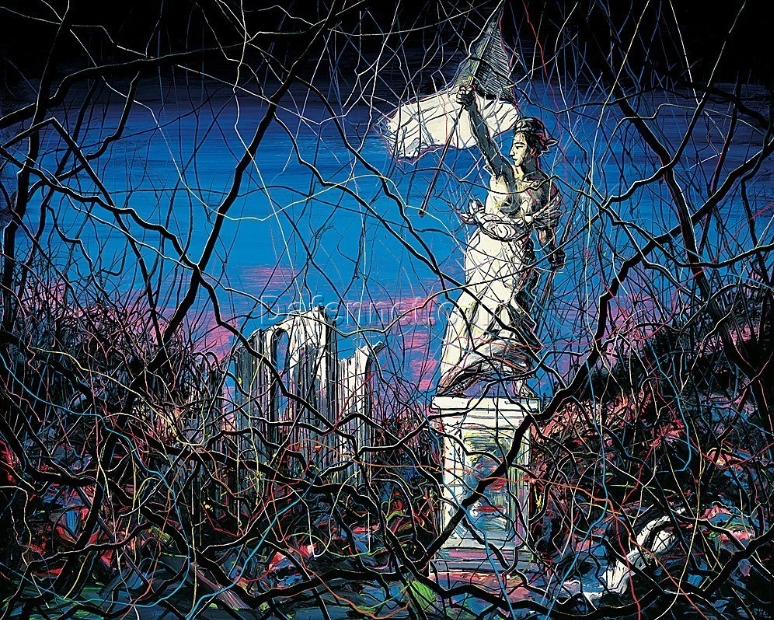Oil Painting Info
Zeng Fanzhi | Contemporary Chinese Artist of Global Influence
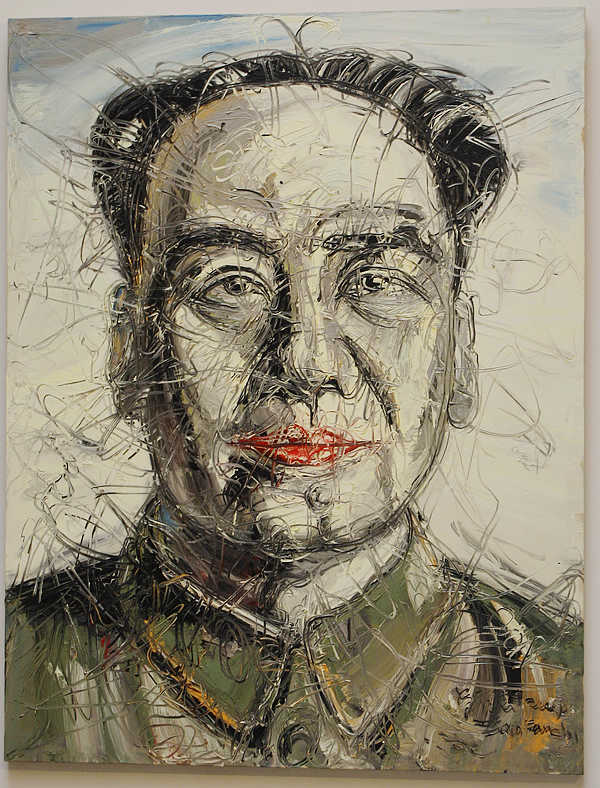
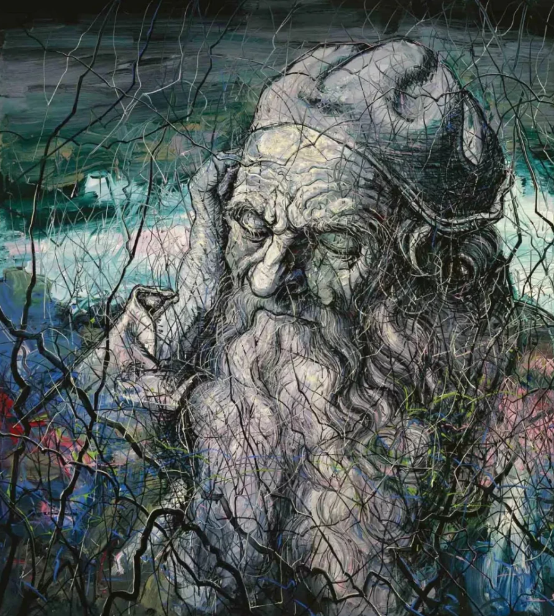
Zeng Fanzhi – Artistic Journey and Significance
Zeng Fanzhi was born into an ordinary family in Wuhan, Hubei Province. His parents worked in a printing factory. Fascinated by “scribbling and doodling,” he dropped out of middle school. At the age of 17, he traveled widely with friends who shared his passion for art, and in Beijing and Shanghai he encountered works by modern Western painters. Determined to enter the world of art, he set his sights on formal study. However, his weak academic performance led him to fail the national college entrance exam four times. It was not until 1987, on his fifth attempt, that he was admitted to the Oil Painting Department of the Hubei Academy of Fine Arts.
Artistic Development
In the early 1990s, Zeng was strongly influenced by Expressionism and Abstract Expressionism. His works from this period feature distorted, exaggerated figures and a rough, forceful style. By the late 1990s, his art shifted toward images marked by distinctive Pop characteristics. After 2000, Zeng turned to his famous Abstract Landscapes, works that incorporated Chinese traditional motifs, particularly the expressive power of linear forms.
At a surface level, the series drew on features of traditional Chinese landscape representation, yet the dazzling urban nightscapes he painted were violently disrupted and entangled by brambles—linear thickets that fragmented the image.
From the standpoint of painterly language, Zeng’s pre-2000 works relied on recognizable forms and images to express his themes. After 2000, he deliberately sought to dissolve the integrity of the image, freeing himself from the constraints of figuration. He experimented with mechanical brushstrokes to disrupt pictorial unity, eventually arriving at his abstract landscape method: first constructing a landscape (such as a night scene), then subverting it with new layers of imagery (such as branches of thorns). This created dramatic visual conflict, where symbol and realism coexist, abstraction and figuration intermingle, and luminous stillness collides with violent rupture. Through this, Zeng discovered a new visual language to articulate the harsh themes that had long defined his art.
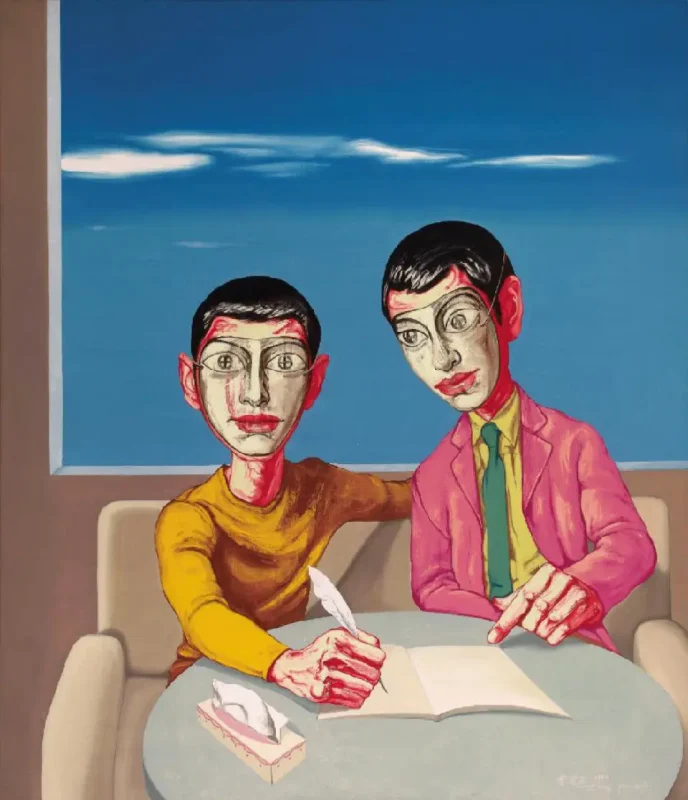
Artistic Meaning
The expressive force of Zeng Fanzhi’s work arises from the eternal tension between memory and lived reality, as well as his ability to move fluidly between history and the present. Whether working in abstraction or figuration, whether expressionistic or contemplative in tone, his paintings consistently use unique imagery to probe the relationship between reality and history, society and the natural world, and humanity and its environment.
